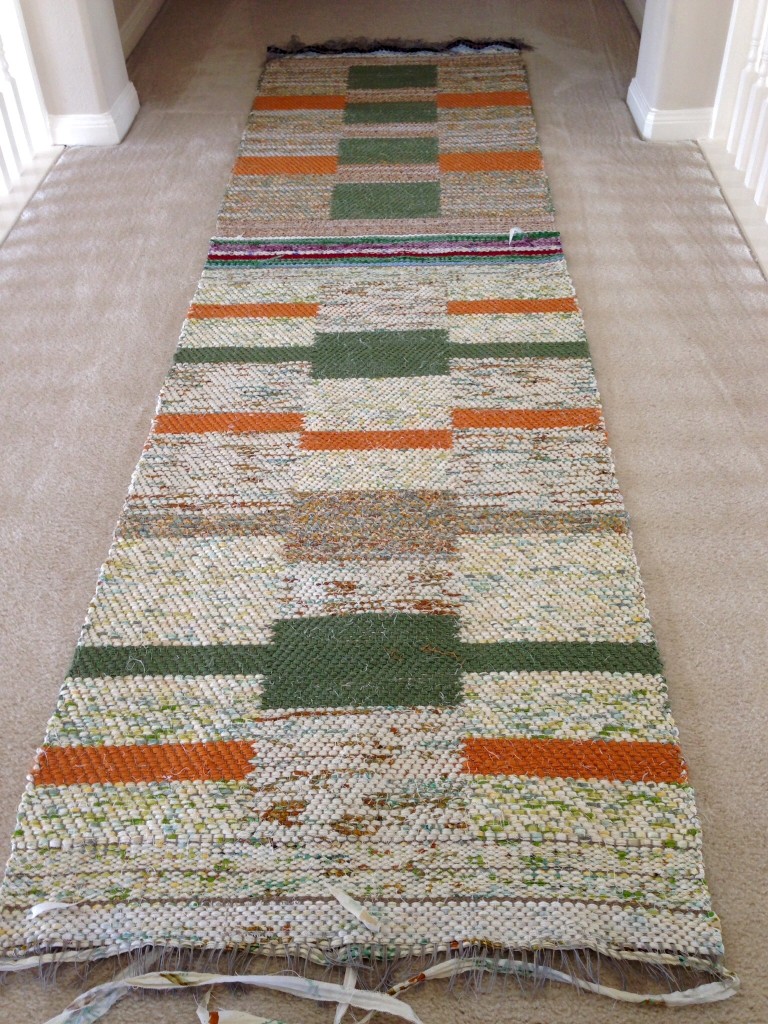Efficiency isn’t always faster. I cut these two rugs off even though there is still warp on the loom, because an empty cloth beam enables me to get optimum warp tension for the next rug. It does take additional time and effort to tie back on, but I get better results in the long run. So I call it efficient.

Listening is like that. Most of us think we are too busy to learn new things. But listening well increases our learning capacity. It does take effort, but it is the kind of effort that brings rewards. Good listening habits increase learning efficiency.
How do you hear? Since listening is key to learning and growing, consider these four ways of listening.
- Casual listening. In one ear and out the other.
- Convenient listening. Interested only as long as it is easy.
- Distracted listening. Divided attention.
- “Receiving” listening. Fully engaged attention, with fertile soil for seeds of learning to grow.
“Receiving” listening takes effort and attentiveness, but is the most efficient kind of listening because it produces the best results. None of the effort is wasted, and little by little you see the seeds of learning begin to grow into fruit to share with others.
I would love to have you join me in Eureka Springs, Arkansas, August 27-29, 2015. I will be at Red Scottie Fibers at the Shoppes at Fleece ‘N Flax to teach a Double Binding (Dubbelbindning) Rag Rug Workshop. I will take you through the steps to design and weave one of these beautiful rag rugs of your own. Small class size; few openings left. Contact me if you would like more information.
May you hear and be heard.
Listening,
Karen

I’m interested in the class in August! Please tell me more
Great!! I will send you an email with more details.
Karen
As I am a “novice” when it comes to weaving rugs I totally agree with you on this Karen! I made the mistake of fully loading my loom with warp with the intent of creating one rug after another—-since I did not use a tension box (a big mistake) I am noticing that by the time I am mid-way between one completed rug and the next that my warp tension has changed dramatically. So I decided to cut each completed rug and re-tie then begin another rug just to make sure the tension is right. I plan on buying a tension box for my old Union #36 and plan to warp only enough to cover a few rugs at a time!
I don’t really mind tying back on. I have to take it into consideration, though, in planning the warp. When I forget to do that, the last rug is shorter than I want. 🙂
I’ve never used a tension box, but I’ve never put on more than eleven yards at one time. So far…
Happy weaving,
Karen
I’m going to assume you warp back to front. I also have never used a tension box and am not sure exactly how it works( More Stuff??). I learned to warp front to back an d even with 15-18 yrd warps have not yet (40 years weaving) had a tension problem. I tried back to front, but found it quite slow and aquard for me. In fact some production weavers I know warp back to front 15 yard warps, cut off finished material, tie on to old warp, and roll the new warp right on the back beam and weave away. The tension control comes when the weaver ties on to the front beam when warping front to back. I know it may be hard to give up back to front, but this may solve the problem. If you do switch let me know how it works, love, peace, and joy, linda
as always your work is beautiful. linda
Thank you, Linda!
I do warp back to front, following traditional Swedish procedures. It has been a very reliable process for me, so I don’t see myself switching. I know others, like you, have had great success with front to back warping. It’s great that there are multiple ways to get good results!
I always love your input and appreciate your years of experience!
Happy weaving,
Karen